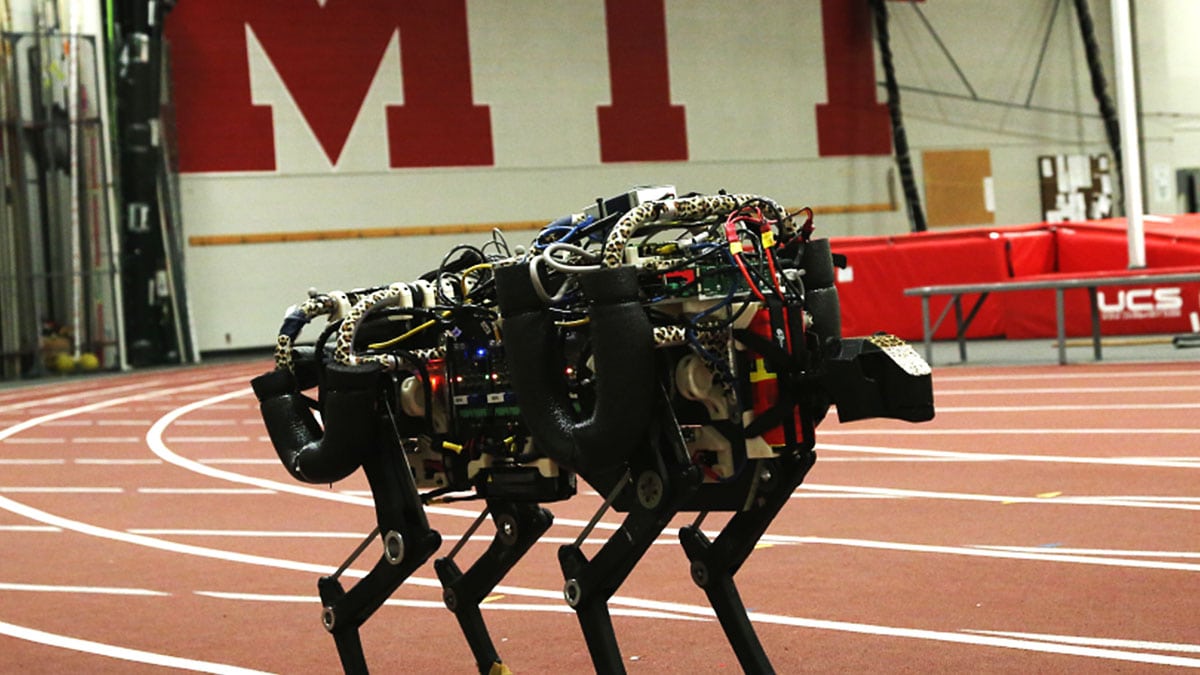The fastest animal in the world just got cloned. Well, not exactly, but researchers at the Massachusetts Institute of Technology (MIT) have created a robotic version of a cheetah. It’s about the same size as an average female cheetah and can run up to 16 kilometers an hour and jump as high as 40 centimeters -plus it’s quite nimble on rough terrain. It’s clear that quite a bit of CAD training and 3D CAD training went into making this engineering marvel, but just how does it work?
Motors, Sensors and an Algorithm
In order to maintain fast speeds, the Cheetah robot uses a network of sensors to feed information on the terrain and other factors to an onboard computer. The central processor then applies an algorithm to determine the amount of force each leg needs to exert when touching the ground while running and feeds this information to 12 powerful lightweight motors which control movement.
The robot cheetah is battery powered and can currently run for 15 minutes before needing a recharge. Its parts are actually quite expensive, too. MIT professor Sangbae Kim referred to his group’s project as “the Ferrari of the robot world.”
Researchers hope to raise the robot cheetah’s maximum speed to 30 kph. They would also like to improve its smoothness and agility when running at top speeds. Hopefully, one day it will become as graceful as our friend down here:
Possible Uses
Kim would like to see his team’s creation saving lives as early as ten years from now. In the meantime, though, there are plenty of other possible applications for the robot.
Given the cheetah’s agility and speed on rough terrain, it could possibly be used to help people with mobility restrictions move around quickly in areas where traditional devices like wheelchairs have limited access. Search and rescue operations are another possible use for this creation.
Commercial uses are also possible. Amazon, for example, already uses aerial drones to deliver products, so a robot cheetah courier can’t be that far off. A replacement for off-roading sports vehicles may also be in the cards.
The robotic cheetah project was funded by the U.S. Department of Defence’s Defence Advanced Research Projects Agency (DARPA). This has inevitably lead to quite a bit of internet chatter about whether or not there may be an ulterior militaristic motivation behind the project.
Instead of becoming unreasonably suspicious and starting to fear a Terminator-esque future where robot cheetahs become self-aware and start attending CAD colleges themselves (to learn how to reproduce), it’s best to look at the big picture. DARPA has been responsible, in full or part, for some very useful inventions that aren’t used for war, including the internet.
What do you see the robot cheetah doing in 10 years? In 20? Let us know in the comments.



